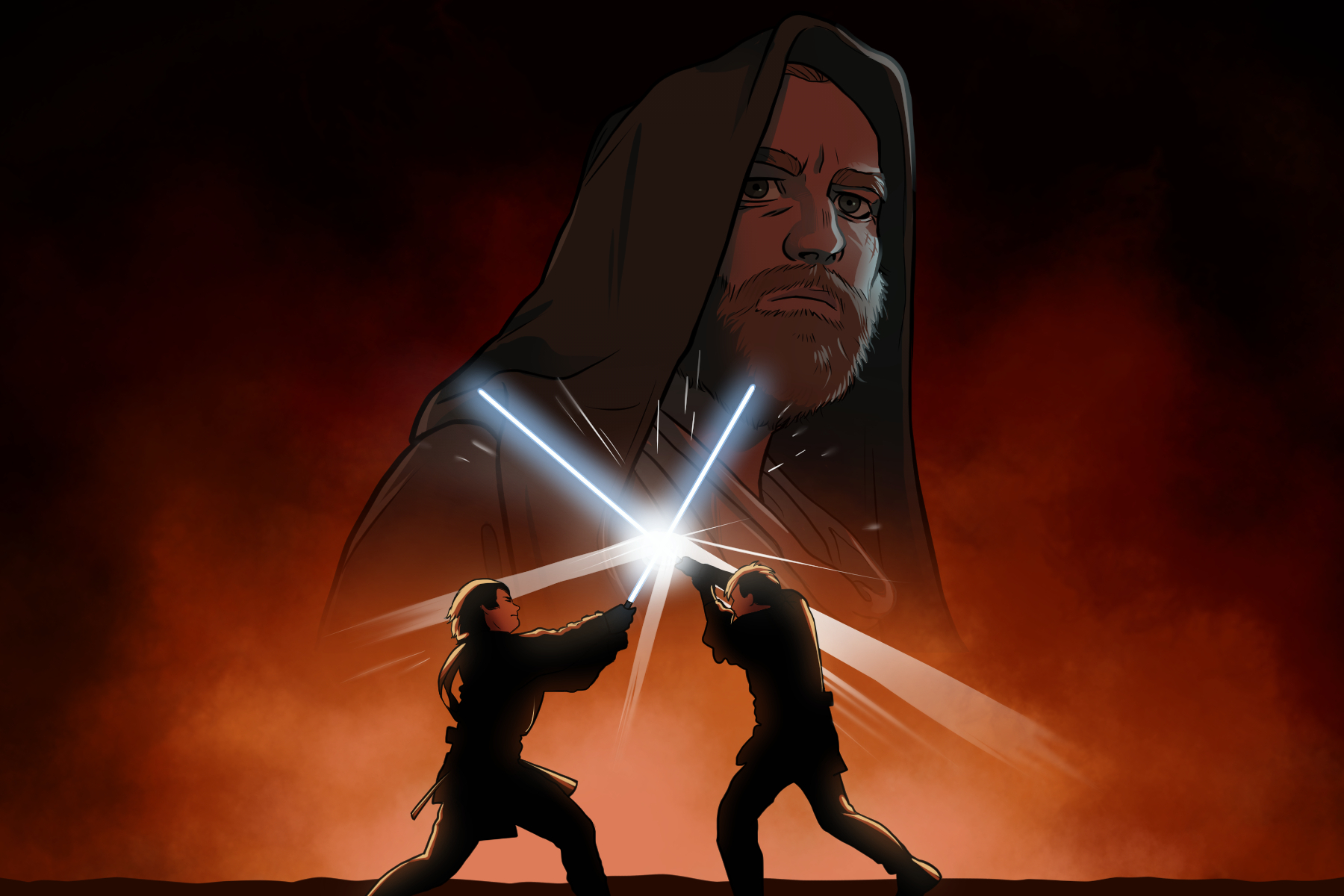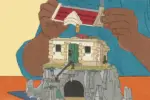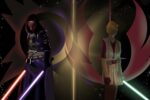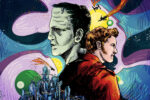When Disney announced a new series centering around the legendary Obi-Wan Kenobi, many fans were ecstatic to finally see one of the most iconic “Star Wars” characters on their screens again. But none, perhaps, were as excited as fans of the prequel trilogy, in which Ewan McGregor first took on the role of Obi-Wan. Their luck only improved when it was later announced that Hayden Christensen would reprise his role as Anakin Skywalker/Darth Vader for the series. It was a welcome choice, but also one that showed Disney’s intent to bring the prequels — and their fans’ enthusiasm — into their version of the “Star Wars” universe. Some might even say the crew behind “Obi-Wan Kenobi” wanted to redeem the prequels or at least encourage viewers to give the trilogy another chance. And so, in between Part IV and Part V of the new Obi-Wan series, that’s exactly what I did.
Like many longtime fans of “Star Wars,” I was raised on George Lucas’ original trilogy. They were the movies that no other film could beat. I don’t even remember the first time I saw “A New Hope,” but I do recall watching it over and over as a kid, along with “The Empire Strikes Back” and “Return of the Jedi.” For me and my dad — a lover of “Star Wars” since ‘77 and the person who introduced the movies to me — “The Empire Strikes Back” was undoubtedly the best of all the “Star Wars” films, a pretty popular opinion among fans and non-fans of the franchise (only because it’s true!).
Nevertheless, I loved the original trilogy without any awareness of why, all in the magical way a kid loves the books, movies and stories they were raised on. I loved them uncritically and unconditionally. Now, I’m able to see them with a more analytical eye, and I certainly wouldn’t say the trilogy is entirely flawless. But it comes pretty damn close. The “Star Wars” prequels, however, are another matter altogether.
My dad, as a member of the earliest generation of “Star Wars” enthusiasts, is still substantially disappointed in how the prequel trilogy turned out, and he passed this disappointment on to me. I remember watching “The Phantom Menace” and “Attack of the Clones” when I was a little kid, enjoying all of the flashy visuals and rapid action but knowing on another level that they didn’t compare to the original movies. I still couldn’t tell you whether I formed this opinion myself or inherited it from my dad. But what’s important is that this assessment stayed with me for over 10 years, until recently, when I decided to revisit the prequel trilogy with as much objectivity as I could muster.
George Lucas’ “Star Wars” prequels have been called many things. Many critics were especially brutal when “The Phantom Menace” was released, with Rolling Stone writing, “The actors are wallpaper, the jokes are juvenile, there’s no romance, and the dialogue lands with the thud of a computer-instruction manual.” Others, like Frank Scheck of The Hollywood Reporter, were just as disappointed but gentler with their criticisms: “…it’s hard to avoid feeling that Lucas has placed so much emphasis on outdoing himself technically that he lost sight of what made his original films so much fun.”
These kinds of responses were the general consensus for the first film in the highly anticipated trilogy for a long time, and they extended to Lucas’ next installment, “Attack of the Clones.” Even Roger Ebert, who was surprisingly pleased with “The Phantom Menace” and particularly its visual innovations, expressed solid disappointment that the flaws riddled throughout the first movie not only remained but grew within this next film. Ebert wrote that the main characters “seem so strangely stiff and formal in their speech that an unwary viewer might be excused for thinking they were the clones, soon to be exposed.”
While the actors’ “lifelessness” that Ebert mentions is usually the main criticism thrown at “Attack of the Clones” (along with the poorly aged CGI), this critique doesn’t apply so fittingly to the third film. “Revenge of the Sith” is almost universally considered to be the best prequel movie, and on this, I have to agree. Watching the movie again after so many years completely reversed my formerly negative opinion, despite some of the same issues that plagued its predecessors. The CGI is almost as bad as in “The Phantom Menace” and “Attack of the Clones,” especially in scenes with the cartoonish General Grievous. There are also a few particularly painful moments between Anakin and Padme, such as:
ANAKIN: You are so beautiful!
PADME: It’s only because I’m so in love…
ANAKIN: No, it’s because I’m so in love with you.
PADME: So love has blinded you?
ANAKIN: Well, that’s not exactly what I meant…
PADME: But it’s probably true!
It’s hard to imagine cheesier or clunkier dialogue than this. As Mark Hamill once said to Lucas, “Who talks like this, George?!” Yet, on some level, these cringe-worthy moments are about as “Star Wars”-y as you can get. It’s important to keep in mind that the movies are space operas. The tone of “Star Wars,” as Lucas imagined it, has always been operatic and melodramatic, even if the original trilogy manages to pull it off with more charm. So, while I did have to roll my eyes every now and then, I also had to accept that this dorkiness is at the core of “Star Wars” and a large part of what makes it so endearing, exciting and hopeful.
What’s more, these lines seem like minimal flaws when placed in context with the poignant, epic tragedy at the center of “Revenge of the Sith” and the emotional strength behind the story; they’re the last thing a devoted fan of “Star Wars” would remember from this film. Though I was astonished at how well the movie aged overall, I was particularly surprised by how Hayden Christensen, whom the fanbase has alienated since the trilogy was released, exceptionally embodies Anakin Skywalker in literally every scene.
He plays Anakin with such agonized vulnerability, wearing his torn heart right on his sleeve. I’m convinced that Anakin’s moral confusion and dedication to Padme, both eventually leading to his descent to the dark side, are so moving not because of Lucas, but because of Christensen. Outside of the powerful narrative and the complex considerations of fate and duty, he is easily the most impressive and memorable element of the movie. After a subpar performance in “Attack of the Clones,” Christensen was finally able to make Anakin Skywalker his own.
It’s widely believed — and I agree — that the prequels improve in quality with each film, though “The Phantom Menace” and “Attack of the Clones” nearly tie for the worst movie in the trilogy. “The Phantom Menace” is an embarrassment, prioritizing overdone CGI over any kind of memorable narrative. “Attack of the Clones” is a slight improvement, with less Jar Jar Binks but many more stiff, awkward love scenes. And “Revenge of the Sith” is everything its predecessors failed to be: a film that portrays the tragic descent of Darth Vader and the failures of the Jedi Order with an emotional weight that viewers hadn’t seen since “The Empire Strikes Back.” The movies were better than I expected, with certain things aging terribly but others holding up remarkably well.
With the prequels fresh in mind, I began to appreciate the Obi-Wan series in a new way. I saw it not as an innovative story but as a passion project dedicated to a character one can’t help but want to know more about. Obi-Wan’s story in the feature films leaves us with a lot of missing pieces, with none more glaring than the question of what happens to him between the events of “Revenge of the Sith” and “A New Hope.” How does he go from the youthful, twinkly-eyed Ewan McGregor to the old and wearied Alec Guinness? And how does he process the betrayal of his former padawan?
Fortunately, the series excels at filling in these gaps while also intersecting the narratives of three of the franchise’s best characters — Obi-Wan, Leia Organa and Darth Vader. Though I’m generally skeptical of most of Disney’s “Star Wars” projects, even I have to admit that it’s pretty amazing to see McGregor’s Obi-Wan and young Leia develop such a special bond. Their relationship, along with the exploration of Vader’s hatred for Obi-Wan, is undoubtedly the glue that holds the show together and brings fans back for each episode. As expected, McGregor also shines in his portrayal of a subdued and hopeless Obi-Wan who needs the fiery spirit of Anakin’s daughter to reignite his faith in the Force.
Still, it’s clear by now that when it comes to “Star Wars,” Disney deals more comfortably in nostalgia than novel storytelling. For “The Mandalorian” (the only “Star Wars” show so far to feature an original character), showrunners have consistently brought in well-known characters like Boba Fett, Ashoka Tano and Luke Skywalker as a sort of safety measure and form of fan service. Disney launched an entire show around Boba Fett because of the longtime intrigue around Fett and the Clones, and the release of “Obi-Wan Kenobi” is not all that different.
The series relies on the characters’ already-established popularity among fans to do all the heavy lifting. When one closely examines “Obi-Wan Kenobi” so far, it’s obvious that the plot is a near-identical replica of parts of “The Mandalorian.” The Empire is still evil and the Jedi are still the noble underdogs. Droids, lightsaber fights, scant references to the Republic and the Clone Wars. What’s new? How long can we absorb Disney’s rehashing of the same story before we demand more?
If there’s one thing that the prequels consistently deliver, it’s the earnest, sometimes ebullient energy that is characteristic of Lucas’ vision and present in so many lines of dialogue. Aesthetically, “The Phantom Menace” and “Attack of the Clones” are always light, almost glowing, even when depicting a place that should be miserable like Tatooine. “Revenge of the Sith” obviously darkens both the tone and visuals, but the acting remains just as innocent and eager as in the first two films, making the ending even more tragic.
But Disney’s foray into television for “Star Wars” has missed this charming feel to the prequels. The company has opted instead for a grim, sterilized aesthetic that matches the serious tone of the series themselves. It’s time for Disney to take a leaf out of Lucas’s book and realize that “Star Wars” doesn’t always have to be serious. A “Star Wars” story can be playful and even a little silly, while still maintaining the heart and hope that has kept the franchise so beloved for decades.

















